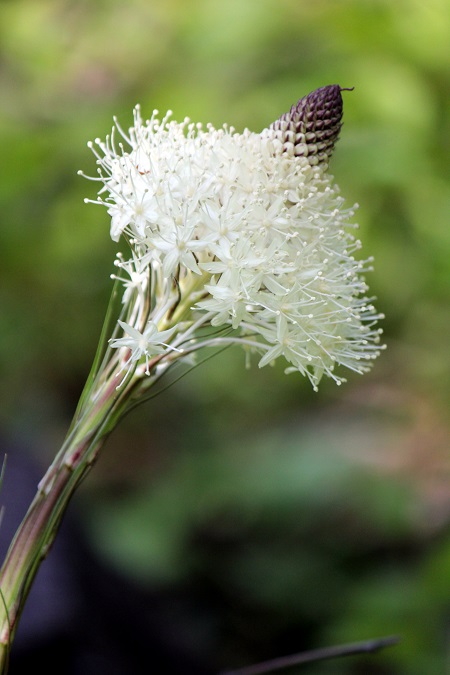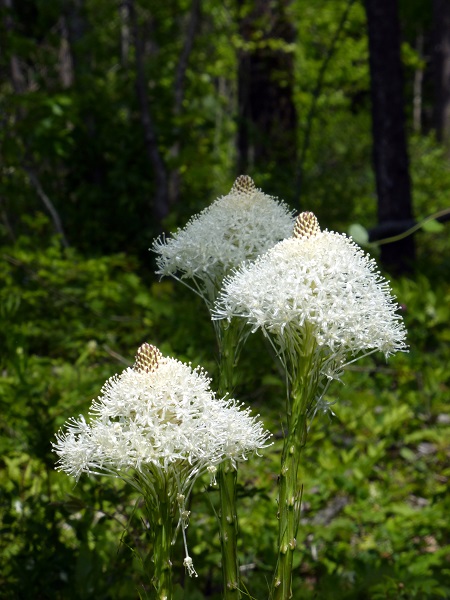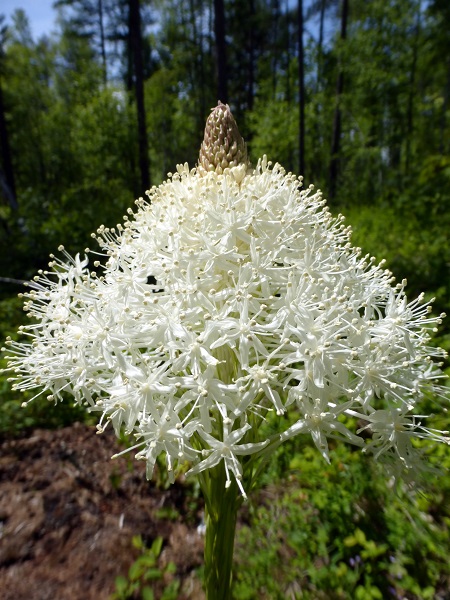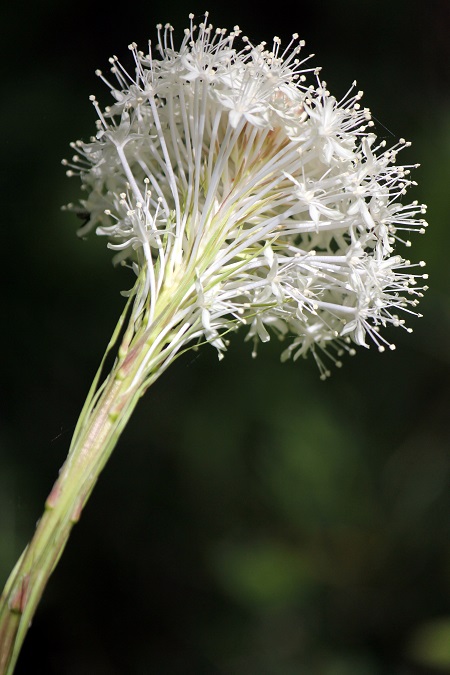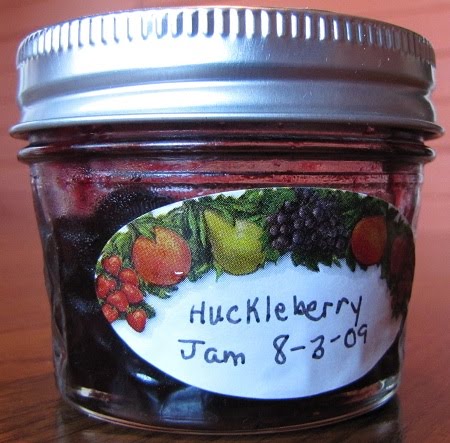Beargrass is popping up all over Northwest Montana. It is a beautiful plant to see in nature and also to photograph. However, beargrass has very little to do with bears and isn’t actually a grass.
Beargrass is part of the lily family. When not in bloom its slender leaves make grassy clumps that grow close to the ground. Nothing spectacular, except that every five to seven years the plant shoots up stalks of tiny-clustered-cream-colored-flowers that resemble a fireworks display. And this spring, the beargrass is exploding!
Also known as Indian basket grass, sqaw grass, soap grass, and quip-quip, this California native grows in mountainous regions from British Columbia to South Central California and east to the Rocky Mountains of Idaho and Montana. This means that we’re smack dab in the middle of its natural growing environment.
Not only is beargrass lovely to look at when in bloom, the plant has many uses as well. Native Americans used the green stalks for basket weaving and also ate the roasted rootstock. The Blackfeet Indians of Montana are known to have used beargrass for medicinal purposes. A decoction of grated roots was used as an orthopedic aid for breaks and sprains. Roots were washed and rubbed to make a lather and used to wash sores. A poultice of chewed roots was applied to wounds.
Wild animals like beargrass too. Deer and elk feast on the flower stalks while clumps of beargrass provide feeding grounds for rodents, which in turn attracts raptors. As for the bears, grizzlies sometimes use beargrass leaves as nesting material for winter dens.
I love when Montana has a “good” year for beargrass. It makes our hikes and walks all the more enjoyable, as it did on a recent trek of the Teakettle Trail. The trail was abundant with wildflowers, with beargrass making the most lavish display.
Many times when I am hiking, I think of Lewis and Clark and their Corps of Discovery. Picturing their expedition of the west in the early 1800’s with its trials and tribulations, yet also as a thrilling adventure, gives me impetus to keep going. Imagine you’re an explorer discovering new lands with breathtaking scenery, magnificent wild animals, and exotic plants. What that must have been like!
Lewis noted on June 15, 1806, on the Weippe Prairie, Idaho, “There is a great abundance of a species of bear-grass which grows on every part of these mountains, it’s growth is luxouriant and continues green all winter but the horses will not eat it.”
As David and I were winding down our hike on Teakettle, I mentioned that the profuse blooming of beargrass is more important to me these days than the state of affairs of the nation. Even though I live in America, I feel miles away, And so it is with many of us who live in Montana, we leave our worries behind and watch the flowers grow.
